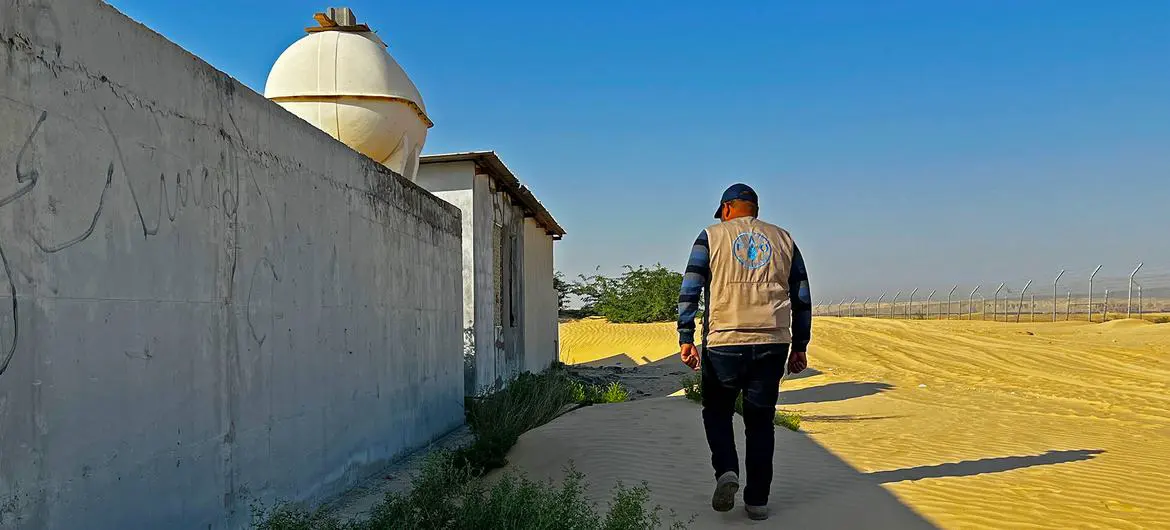Spirit of resilience braces desertification winds in Saudi Arabia | UN News
A low tech and sustainable solution to holding back advancing desert sands in eastern Saudi Arabia could help farming communities to thrive and conserve vulnerable habitats.
Climate change has made the issue more pressing as higher temperatures and lower ground moisture contribute to drier sand and the increased likelihood of desertification.
The state-owned oil company, Aramco, which extracts oil and gas in the eastern desert has over many decades protected infrastructure, including roads, mechanically removing sand amongst other measures, but the costs are high, so FAO has been promoting more sustainable approaches.
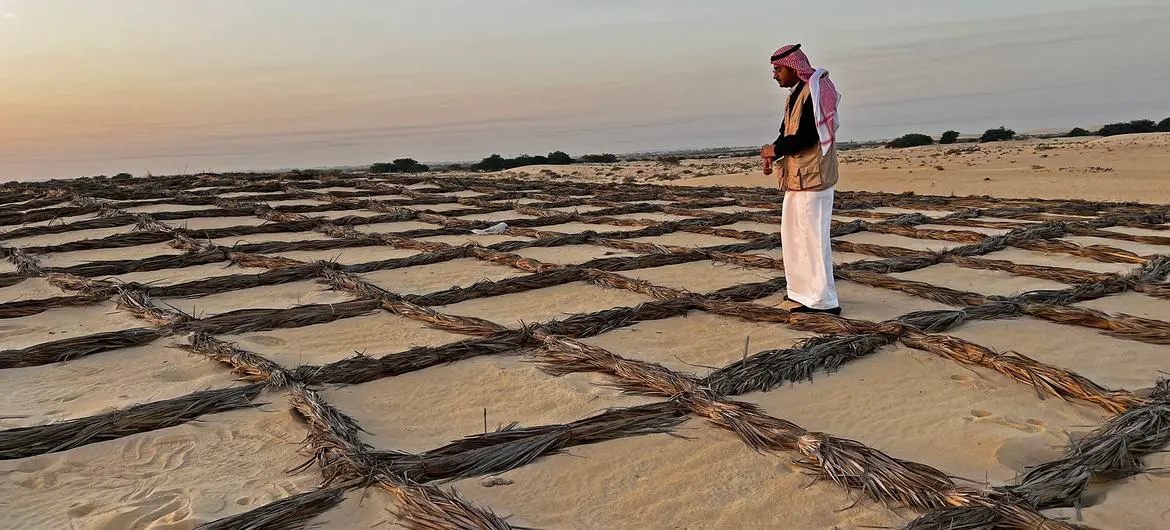
It is trialing low-level sand barriers made of palm fronds which are inexpensive and use material may otherwise would go to waste.
Various designs can be tailored to protect farms and service facilities based on the geographical and geomorphological conditions,” said Mona Dawalbeit.
These designs may include checkerboard and linear patterns with varying heights, ranging from 10 cm to one metre, depending on the specific purpose of the sand barrier.
Environmental benefits
The checkerboard technique effectively reduces sand encroachment and promotes the growth of natural vegetation including createing favourable conditions for planting trees or the spreading of seeds.
“The palm barriers will not fully prevent the wind from moving sand towards land you want to protect,” said Mona Dawalbeit, “but it does slow the speed and completely change the flow of the sand.”
There are additional environmental benefits of using palm fronds as typically they would be burned as waste, releasing the harmful carbon dioxide gas which is fuelling climate change.
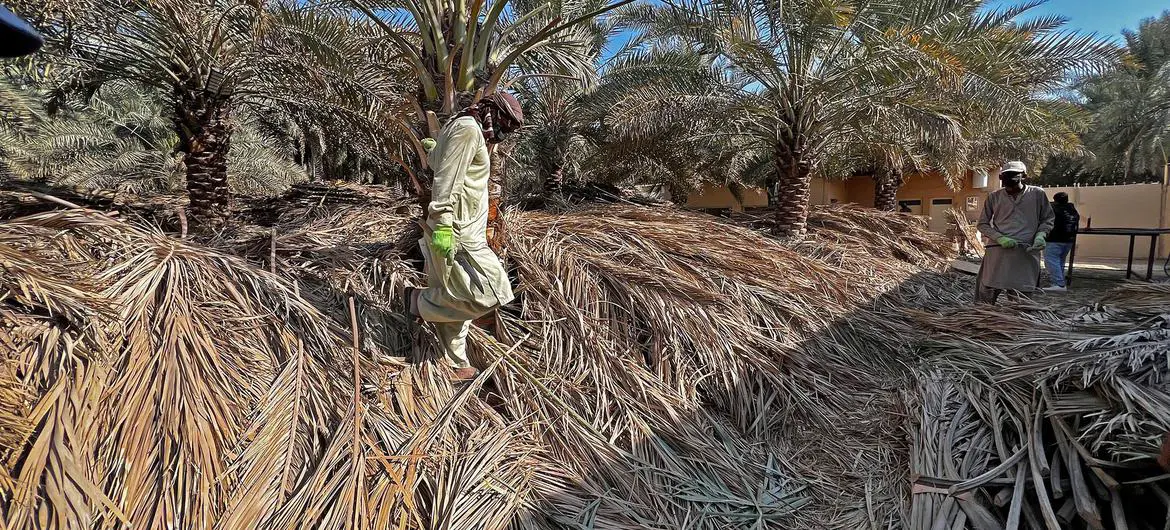
FAO is also piloting weather stations based on global standards which provide data on the complicated science of sand movements.
Preventive action
By analysing sand grain ‘deposit suspension’ (particles are suspended in mid-air and are blown by the wind across land), ‘saltation’ (smaller particles which are blown in jumps across the surface) and ‘surface creep’ (particles which are rolled over the ground) the volume and direction of sand encroachments can be predicted in conjunction with other climatic factors such as wind speed and direction, humidity and temperature.
Preventative action can be targeted in specific locations where sand tends to move onto valuable agricultural land eroding the topsoil.
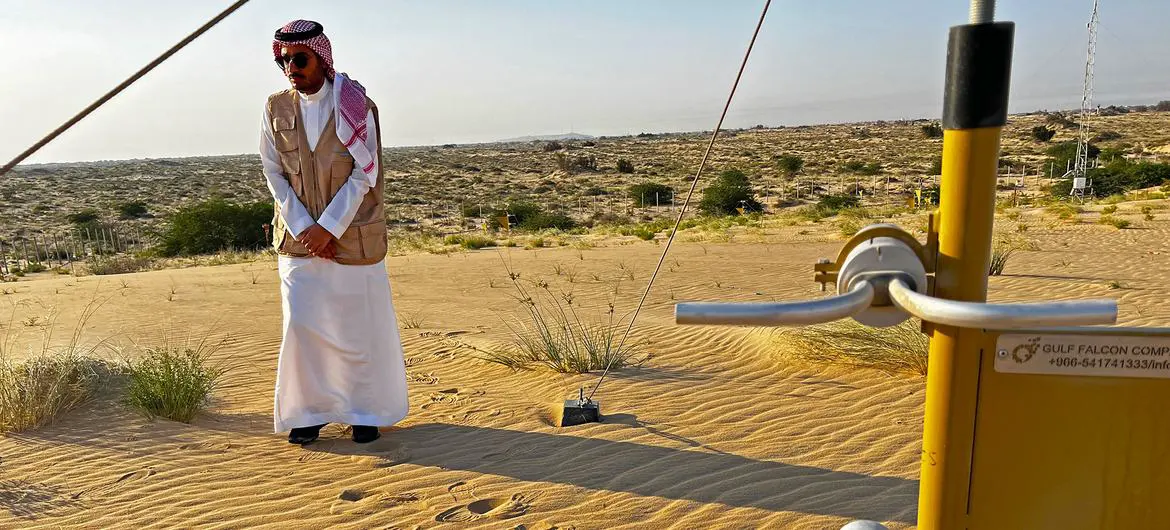
FAO collaborated with Green Environment Society in Al Ahsa to implement sand barriers aimed at protecting Al Ahsa National Park, a government-managed entity.
The initiative sought to strengthen the relationship between governmental institutions and local communities while building the capacity of NGOs to construct sand barriers using palm fronds.
Community involvement
“This approach not only ensures local sustainability,” said FAO’s Mona Dawelbait “but also promotes community involvement in environmental conservation efforts”.
“In Saudi Arabia and in Al Ahsa in particular, there are concerns about land degradation and the loss of productive land,” she added, “but together we can change these challenges into opportunities.”
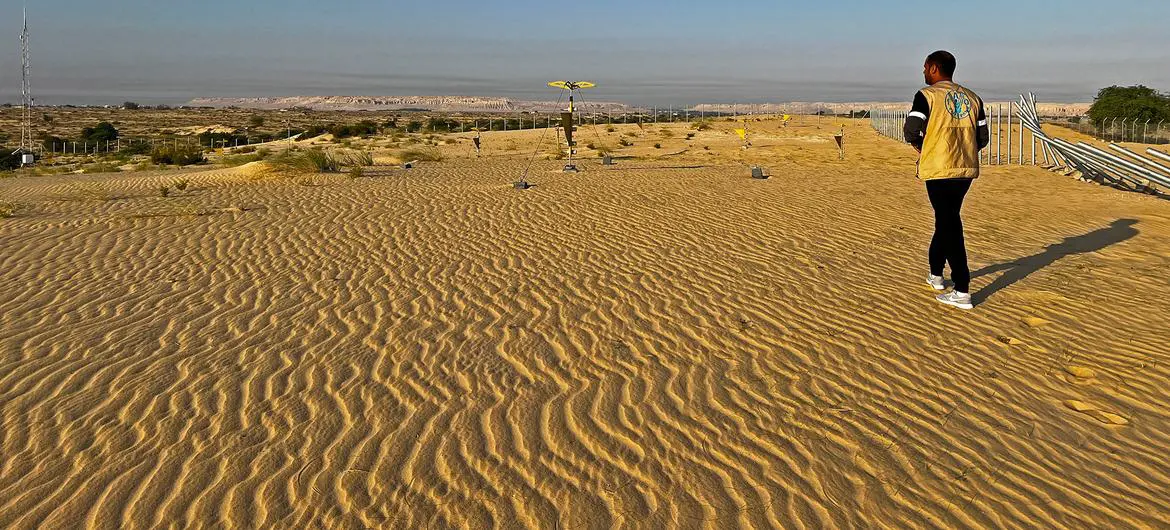
“I have worked with desert communities for 20 years. They are resilient people with strong spirits and I believe, the wind of change in terms of holding back land loss will carry on beyond this FAO intervention.”

